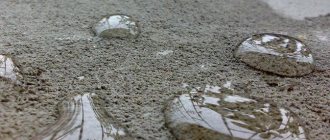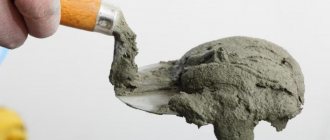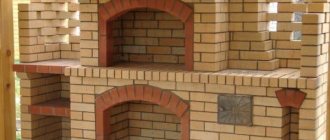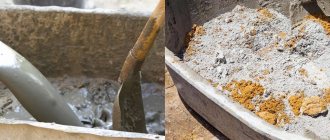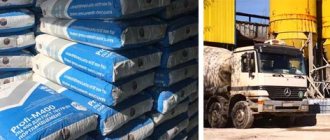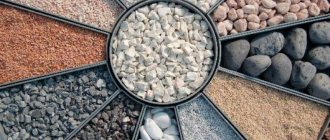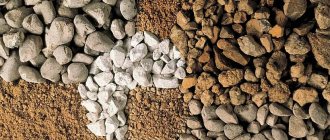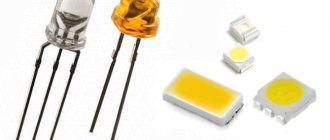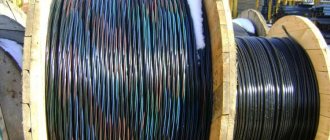Traditional brands of cement are afraid of temperature changes and begin to deform at high temperatures. And since this material is very popular, builders choose special fire-resistant varieties. They are adapted to any impact and have a lot of operational advantages.
Advantages
When choosing refractory cement, it is important to consider not only its advantages, but also its disadvantages. Among them:
- High cost when compared with classic options for binder components.
- The probability of a chemical reaction when interacting with some elements from the periodic table. During such processes, the material does not release toxic substances and remains harmless to human health, but the result of the reaction is an unpleasant odor.
The list of advantages is more extensive.
It included the following points:
- Increased strength properties. They are due to the use of a special production technology, which involves thermal effects on the raw materials. When exposed to high temperatures, improved bonding of ceramic joints is achieved. To make masonry and plaster mortar, you must strictly follow the proportions and recipe.
- High setting speed and short hardening time. Compared to other brands of cement mixture, including Portland Cement M400, heat-resistant cement quickly gains the required strength and makes the structure ready for direct use within 24 hours.
- Good degree of viscosity and adhesion to other building materials.
- Resistance to corrosion processes, which is ensured by the presence of calcium aluminate in the composition.
- Heat resistance. Such a binder component can withstand exposure to open fire and heat with temperatures up to +2000...+3500°C. This makes it an indispensable solution for industrial premises or buildings located in an area of increased fire danger.
- Good insulation against electrical discharges. Cement contains no moisture, so it has non-conductive properties.
- Reliability and stability of adhesion of bricks. In the production of heat-resistant grades, special glue granules are used, which provide maximum strength to the connection of the brickwork, block voids and prevent air from escaping.
The use of fire-resistant mixtures requires compliance with the same proportions as when choosing other binding materials.
Fire resistance of reinforced concrete structures
The fire resistance of reinforced concrete structures depends on many parameters:
- Structural section dimensions;
- Thickness of the protective layer;
- Diameter and quantity of reinforcement;
- Loads on the structure.
Horizontally located structures
These designs include the following types of products:
- Floor coverings and panels;
- Beam slabs;
- Runs;
- Beams, etc.
Note! For purlins and beams, the fire resistance limit also strongly depends on the width of the section.
In addition, it should be emphasized that with the same parameters, the fire resistance of beams and slabs is different, which is due to the fact that during a fire the beams are heated from three sides.
Thin-walled flexible structures can collapse prematurely under the influence of fire along an oblique section near the supports. Such destruction is prevented by installing vertical frames with a length of ? span on support sections.
Flexible thin-walled structures include:
- Ribbed and hollow panels;
- Beams and crossbars;
- Floorings, etc.
Slabs supported along the contour have a much higher fire resistance limit than bendable elements. Such slabs are reinforced in two directions, therefore their fire resistance depends on the ratio of the length of the reinforcement in the long and small openings.
Note! From the point of view of fire resistance, the most durable is reinforcing steel grade 25G2S of class A-III. Its critical temperature is 570 degrees Celsius. It must be stated that the price of reinforcement made from such steel is relatively high.
Columns
The fire resistance of structures such as columns also depends on a number of factors:
By the way! It will be interesting to know: Waterproofing the foundation with bitumen mastic
The destruction of columns under the influence of open fire occurs as a result of a decrease in the strength of concrete and reinforcement. Moreover, eccentric load reduces their fire resistance.
Note! The fire resistance of columns made of mortar on granite crushed stone is 20 percent less than that of columns on lime crushed stone.
Directions for use
Heat-resistant cement can be used for a wide variety of works in the construction industry. However, due to its high cost, it is usually used for the construction of buildings and structures exposed to high temperatures. This solution is especially in demand for industrial premises and private homes.
The list of main areas of use is as follows:
- Organization of monolithic lining during repair and restoration work with thermal and melting equipment, which is operated at temperatures up to +1600°C.
- Construction of reinforced concrete structures resistant to high heat.
- Production of blocks and bricks with fire-resistant characteristics.
- Production of mortar for brickwork and coating of sauna stoves.
- Creation of adhesive bases for the oil refining industry.
- Construction of furnaces for glass production.
- Construction of fireplaces and stoves for residential properties.
- Installation of smoke exhaust systems.
Heat-resistant mixtures are also necessary for mining or metallurgical activities. They are also indispensable for arranging tunnels, substrates and other structures subject to intense heating.
Area of use
For the construction of modern fireplaces and stoves, when laying chimneys and constructing ventilation.- In the production of lining elements as a connecting element.
- In the glassmaking industry.
- For the manufacture of furnaces of special strength (for production tasks in ferrous and non-ferrous metallurgy).
- For the construction of structures, without which the production of phosphorus, ammonia and alcohol is indispensable.
- When preparing a solution for coating home ovens.
- For the production of building blocks, fire-resistant bricks, prefabricated reinforced concrete structures with increased resistance to fire (construction of mines, foundations for cars, underground structures).
- To restore a melting device or other thermal unit operating at temperatures up to 1600 degrees Celsius (burner stones, glass furnaces).
- For organizing a monolithic lining in the process of restoring a stove or fireplace.
- As a component in the creation of adhesives and solutions in the chemical, construction and oil refining industries.
- Using refractory cement, the base is made for window sills, lintels and floors.
There is no better bonding material for construction work during the colder months than heat resistant cement. Thanks to the resulting solution, shrinkage can be avoided at temperatures below zero (up to -10 degrees).
Brands of refractory cements
The production of fire-resistant cement mixtures involves the use of alumina, taking into account the requirements of GOST. Depending on the concentration in the aluminum oxide composition, cement is divided into several grades. If the content of additives does not exceed 35%, the product is designated by the abbreviation GC. If a higher proportion is present, the designation VHC is used.
Mixtures with the VGC I grade consist of 60% aluminum. The composition also contains the following components:
- Calcium - 32%.
- Silicon - 3%.
- Iron, magnesium, sulfur - from 1 to 2%.
The VGC II series contains 70% aluminum oxide and a small amount of silicon and calcium oxides. Near the markings there are numbers indicating strength properties under compressive loads. Thus, mixtures of the GC 40 series can withstand loads of 40 MPa.
When choosing a brand, buyers pay attention to the actual thermal and mechanical loads that the cement mixture will encounter. A wide selection of heat-resistant components of both foreign and domestic production is offered for sale.
The second group includes materials that are created on the basis of clinker from the Volga and central regions of the Russian Federation, Moscow and Siberia. Also available on the market are Turkish, Finnish, French and Polish mixtures that have a lot of operational advantages.
Concrete
The value of the operating condition coefficient γ
bt
is taken based on the average concrete temperature when calculated using the formulas:
by temperature of the outermost fiber - (5.6, 5.7);
by temperature in the anchoring zone - (8.14).
The value of the coefficient of concrete operating conditions for compression γ
bt
is allowed to be taken equal to one (
γ bt
= 1) when heating concrete to a critical temperature (clause 4.12) and
γ bt
= 0 when heating concrete above the critical temperature.
By the way!
It will be interesting to know: It is value that serves as the basis and foundation of each culture of the exam essay. When calculating fire resistance and fire safety using a deformation model and using computer programs, it is necessary to take into account the change in the coefficient of working conditions of concrete γ
bt
over the entire range of concrete heating temperatures.
In this case, the calculation is carried out based on the geometric section of the concrete. The values of the coefficient of operating conditions for concrete in compression γ
bt
are taken from the table. 5.1 depending on the temperature of the concrete.
Rbtnt
=
Rbtn γ btt
;
Rbtt
=
Rbt γ btt
;
Rbt,ser,t
=
Rbt,ser γ btt
( 5.2)
The value of the coefficients γ
bt
,
β b
and
φ b , cr
for concrete at temperature, °C
Main characteristics of the material
The performance characteristics of heat-resistant cement mixtures are as follows:
- Possibility of operation under constant temperature influence up to +3500°C. Resistant to direct fire.
- Improved fire-resistant properties and strength due to special production technology.
- Increased surface bonding coefficient and optimal viscosity.
- High hardening speed. Structures connected by heat-resistant components can be used within 20 hours.
- No difficulties in preparing the mixture yourself.
- Standard proportions for manufacturing. To prepare a high-quality mixture, it is enough to use a generally accepted recipe, as in the production of traditional brands of cement.
Do-it-yourself heat-resistant concrete based on alumina cement
To make fire-resistant concrete based on alumina cement at home, you need to prepare the following components:
- Water.
- Binding and heat-resistant additives.
The technological process contains a lot of nuances. First of all, you should take care of the cleanliness of all components, and also prevent the possibility of contamination of refractory components with sand, granite or limestone.
Builders use different methods for making fire-resistant concrete. The simplest technology involves the use of a ready-made dry mixture containing heat-resistant additives. If the composition is made from scratch, you will need to correctly create the proportions of the components and mix them.
Experts recommend choosing the first option, since ready-made dry mixtures have the required performance characteristics and are produced using a factory process. Therefore, the user is provided with premium quality cement, which only needs to be diluted with water or solvent.
When starting to independently produce a refractory concrete mixture, it is important to provide for the following additives:
- Chromite ore.
- Magnesite cement.
- Andesite.
- Fireclay fight.
If you choose the right ingredients, the final design will be reliable and durable.
All components are transferred to a concrete mixer and thoroughly mixed in a ratio of 1:4 (cement and sand). When you get a homogeneous mixture, you can add liquid to it until a dough-like consistency appears. In this case, the mixture will receive the required degree of viscosity and quickly become solid. When diluting it with water, it is important to adhere to the recommendations of specialists and not deviate from the recipe.
The finished composition is placed in molds and poured into formwork or used for brickwork. When using aluminous fillers, it is important to dilute them with water in time to prevent excessively rapid setting.
After completing all the steps, it is necessary to clean the equipment and get rid of the frozen material with the tool. If you want to make a small amount of Portland cement-based mortar, mixing the components can be done without a concrete mixer. For this purpose, wide containers and hand tools are used.
Difference from other types of cement
The main difference between fire-resistant cement mixtures and other brands is enhanced protection against high-temperature exposure. Classic products are subject to cracking when heated to +250°C.
If the material is exposed to temperatures above +500°C, the concrete will begin to deform, the mass will lose its integrity and become unsuitable for further use.
Unlike traditional brands of cement, heat-resistant analogues remain resistant to heating up to +2000°C.
Cost of products of different brands
The price of heat-resistant materials depends on various factors, including seasonality. If they are produced in the summer, their cost increases as the volume of construction work increases rapidly. In winter, cement is cheaper and is sold both retail and wholesale.
The cost table looks like this:
- 50 kg of GC-40 cement will cost 1.3-1.4 thousand rubles.
- 50 kg of Gorkal 40 cement, produced by a Polish company, will cost 1.4-1.5 thousand rubles.
- Russian cement VGTs-50 is sold at a price of 1.8 rubles per 20 kg.
Before purchasing a mixture, you need to familiarize yourself with the availability of quality certificates and its brand.
Fire resistance of concrete | CONCRETE-24
Difference between fire resistance and heat resistance
Factors affecting fire resistance
The degree of resistance to open flame is influenced by the following factors:
By the way! It will be interesting to know: The cost of a foundation for an 8 by 8 house
All these parameters are taken into account when designing and constructing a structural diagram. Appropriate calculations are carried out and decisions are made to prevent the spread of open flames during a fire.
Ways to increase fire resistance
How to work
Cement compositions with heat-resistant properties are more expensive than simple brands, so you need to work with them more carefully and responsibly. If you do not take into account the rules and make mistakes, this can lead to unjustified financial costs and the formation of a low-quality design.
In order for the material to adhere well to the surface, it is important to approach the preparatory work correctly and clean this area of any unevenness or defects.
When planning to apply the mixture to the work area, it is important to get rid of dust and dirt, carry out grinding work and remove soot or grease stains. The more competently these measures are carried out, the longer and better the structure will last.

